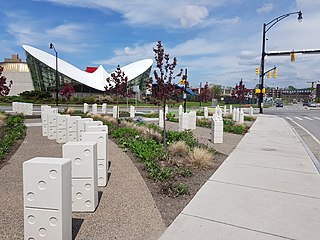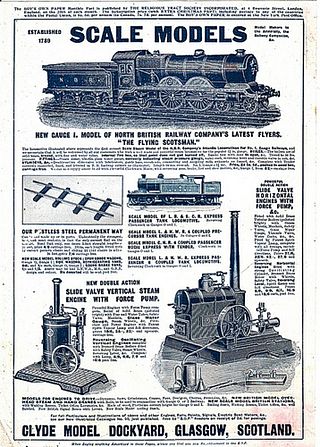



The Historic Toy Museum in Freinsheim (Historisches Spielzeugmuseum Freinsheim) in Germany is a private collection of old toys.




The Historic Toy Museum in Freinsheim (Historisches Spielzeugmuseum Freinsheim) in Germany is a private collection of old toys.
The exhibits date from the time of the Industrial Revolution around 1890 to the Second World War. Most of them are products by the firm of Bing in Nuremberg ( Bing Werke Nürnberg). The museum curator is Marion Groll. The collection by Uwe Groll was the basis for the private museum opened on 2 April 2011. This collection originally concentrated on model railways and accessories of 0 Gauge from the House of Bing. Over the course of years Groll became so fascinated by the firm’s history and the variety of their products, that the collection grew ever wider.
The collection comprises about 1,000 exhibits covering various lines from Bing’s range of products. They were made before 1932 and are mostly in their original condition:
The museum building, the "House by the Stream" (Haus an der Bach) originally went back to the Middle Ages and was renovated as a listed building. It lies opposite the Four-Pipe Well (Vier-Röhren-Brunnen) a former Eichbrunnen for the barrels of the vintner. The house has 3 storeys and a usable area of 300m² for exhibitions and the museum café.

A toy or plaything is an object that is used primarily to provide entertainment. Simple examples include toy blocks, board games, and dolls. Toys are often designed for use by children, although many are designed specifically for adults and pets. Toys can provide utilitarian benefits, including physical exercise, cultural awareness, or academic education. Additionally, utilitarian objects, especially those which are no longer needed for their original purpose, can be used as toys. Examples include children building a fort with empty cereal boxes and tissue paper spools, or a toddler playing with a broken TV remote control. The term "toy" can also be used to refer to utilitarian objects purchased for enjoyment rather than need, or for expensive necessities for which a large fraction of the cost represents its ability to provide enjoyment to the owner, such as luxury cars, high-end motorcycles, gaming computers, and flagship smartphones.

Gebr. Märklin & Cie. GmbH or Märklin is a German toy company. The company was founded in 1859 and is based at Göppingen in Baden-Württemberg. Although it originally specialised in doll house accessories, today it is best known for model railways and technical toys. In some parts of Germany and in Sweden, the company's name is almost synonymous with model railways.

A toy train is a toy that represents a train. It is distinguished from a model train by an emphasis on low cost and durability, rather than scale modeling. A toy train can be as simple as a toy that can run on a track, or it might be operated by electricity, clockwork or live steam. It is typically constructed from wood, plastic or metal. Many of today's steam trains might be considered as real ones as well, providing they are not strictly scale or not enough detailed ones in favor of a robustness appropriate for children or an inexpensive production.

Hornby Hobbies Limited is a British-owned scale model manufacturing company which has been focused on model railways. Its roots date back to 1901 in Liverpool, when founder Frank Hornby received a patent for his Meccano construction toy. The first clockwork train was produced in 1920. In 1938, Hornby launched its first OO gauge train. In 1964, Hornby and Meccano were bought by their competitor, Tri-ang Railways, and sold when Tri-ang went into receivership. Hornby Railways became independent again in the 1980s, and became listed on the London Stock Exchange, but due to financial troubles reported in June 2017, became majority owned by British turnaround specialist Phoenix Asset Management.

A dollhouse or doll's house is a toy house made in miniature. Since the early 20th century dollhouses have primarily been the domain of children, but their collection and crafting is also a hobby for many adults. English-speakers in North America commonly use the term dollhouse, but in the United Kingdom and other English-speaking countries the term is doll's house. They are often built to put dolls in.

Bing or Gebrüder Bing was a German toy company founded in 1863 in Nuremberg, Germany by two brothers, Ignaz Bing and Adolf Bing, initially producing metal kitchen utensils, but best remembered for its extensive lines of model trains and live steam engines.

The Strong National Museum of Play is part of The Strong in Rochester, New York, United States. Established in 1969 and initially based on the personal collection of Rochester native Margaret Woodbury Strong, the museum opened to the public in 1982, after several years of planning, cataloguing, and exhibition development for the museum's new building in downtown Rochester.

The Nuremberg Toy Museum in Nuremberg, Bavaria, is a municipal museum, which was founded in 1971. It is considered to be one of the most well known toy museums in the world, depicting the cultural history of toys from antiquity to the present.

The Rahmi M. Koç Museum is a private industrial museum in Istanbul, Turkey dedicated to the history of transport, industry and communications. Rahmi M. Koç, member of one of the wealthiest families in Turkey and retired chairman of the Koç Group, founded the museum in 1991, which was opened on December 13, 1994. The museum is located in the suburb of Hasköy on the northern shore of the Golden Horn and situated in two historical buildings connected to each other. It is open to public every day except Monday.

Shelburne Museum is a museum of art, design, and Americana located in Shelburne, Vermont, United States. Over 150,000 works are exhibited in 39 exhibition buildings, 25 of which are historic and were relocated to the museum grounds. It is located on 45 acres (18 ha) near Lake Champlain.

The Museum of Childhood is a museum which houses a collection of children's toys and playthings, situated on the Royal Mile, in Edinburgh, Scotland. It was the first museum in the world to specialise in the history of childhood.

Grampian Transport Museum is a transport museum and charitable-based trust located in Alford, Aberdeenshire, Scotland. Its exhibits chart the history of transport in the north east of Scotland through dramatic displays, working and climb-aboard vehicle exhibits and video presentations.

Brighton Toy and Model Museum is an independent toy museum situated in Brighton, East Sussex. Its collection focuses on toys and models produced in the UK and Europe up until the mid-Twentieth Century, and occupies four thousand square feet of floor space within four of the early Victorian arches supporting the forecourt of Brighton railway station. Founded in 1991, the museum holds over ten thousand toys and models, including model train collections, puppets, Corgi, Dinky, Budgie Toys, construction toys and radio-controlled aircraft.

The South German Railway Museum is a railway museum at Heilbronn in the state of Baden-Württemberg in southwestern Germany. It was founded in 1998.

Variety Unit is an exhibit building at Shelburne Museum in Shelburne, Vermont.

The Soltau Toy Museum, formerly the North German Toy Museum in Soltau originated from a private collection. It was founded in 1984 by Hannelore Ernst.

The Clyde Model Dockyard was a famous toy and model shop in Glasgow. Established in 1789, it was located at 22–23 Argyll Arcade. The firm manufactured a range of boats and sailing yachts, but were probably best known for their 0 scale model railway stock and accessories.
The Museum of Lifestyle & Fashion History is a non-profit organization located in Palm Beach County, Florida. Currently the museum is seeking a permanent location.

The Ore Mountain Toy Museum in Seiffen is an internationally known museum of Ore Mountain toys and Ore Mountain folk art. It was opened in 1953 in Seiffen. In 1973 it was joined by the Ore Mountains Open-Air Museum, a folk art and local historic museum with 14 houses typical of the Ore Mountains before 1900 on the edge of the toy village.

Ignaz Bing was a German-Jewish industrialist, naturalist, poet, and memoirist.